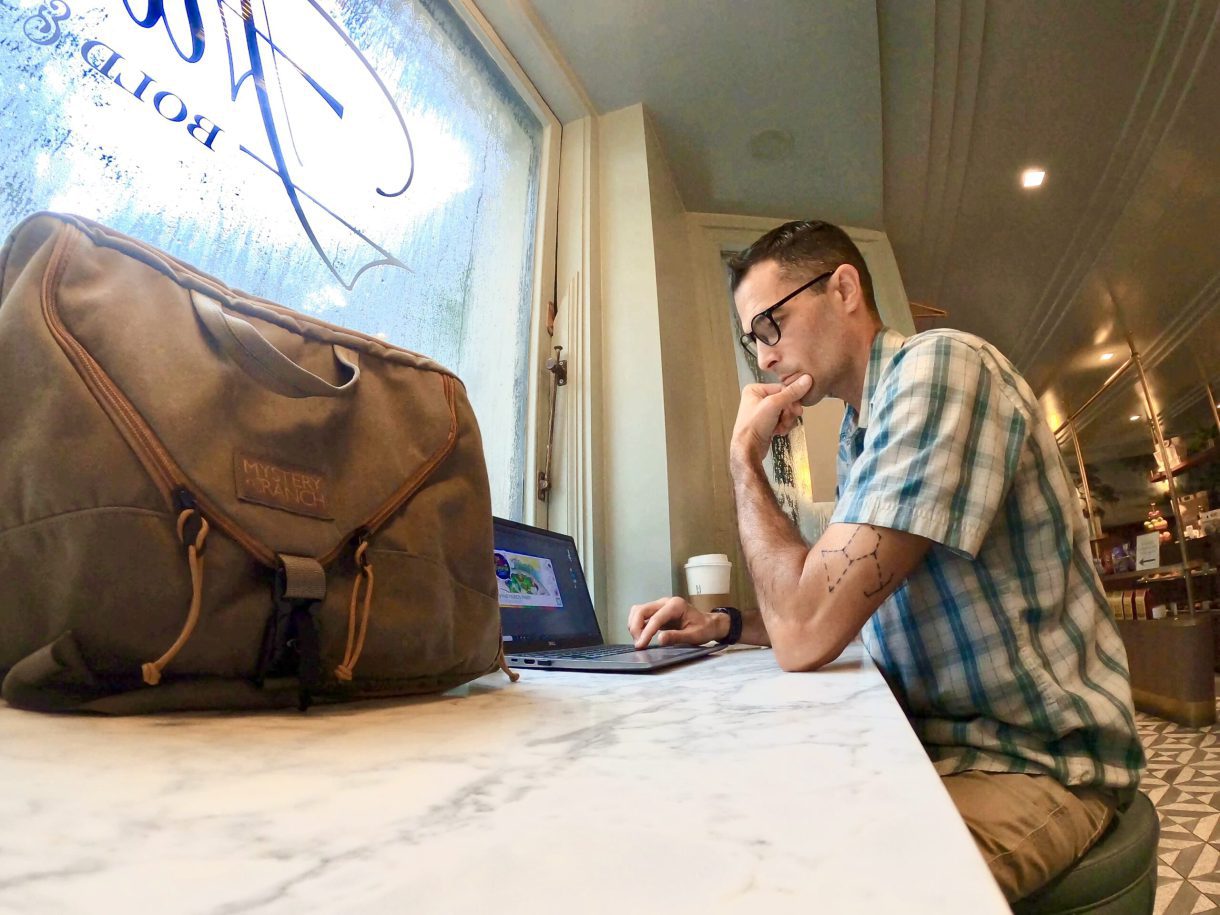
In 2020, WithersRavenel made the leap to a fully remote workplace. In 2021, we focused on creating a safe and successful hybrid work environment. This more flexible arrangement, which gives employees the opportunity to choose where they work, is making our employees happier and leading to a better experience for our clients.
What is a hybrid work environment?
A hybrid work environment is one that includes both company office and remote locations. Where feasible, our employees have the option to work in one of our nine offices, at home, from a public place like a library or coworking space, or a mix of these.
For example, suppose an employee who normally works in an office three days a week needs to travel out of state for their child’s soccer championship. If they’re able to do their work remotely, then we give them the choice to login from afar or take time off. They’re empowered to manage their workload and work/life balance in the way that suits them best.
Benefits for employees
The most obvious benefit of a hybrid work environment is enabling employees to work wherever they’re most creative and productive. Those who are invigorated by the casual interactions of an office environment get to be close to their coworkers, while those who prefer the alone-in-public feeling can set up in a coffee shop or park.
Bryce Gardner, a fully remote employee in our GIS Department, had this to say: “I’m extremely sound-sensitive, so the office life with people making random noises at their desks distracts me a lot. I found that using noise-cancelling headphones helped me concentrate, but I definitely feel more productive being remote.”
This flexibility also allows our employees to fit non-work activities into their workday. Cutting out a commute frees people to hit the gym, take a class, or volunteer with a professional organization. Working remotely opens up the possibility of cooking a hot lunch from scratch or meeting up with a friend for a midday break.
“I have really liked the flex and hybrid work option at WithersRavenel,” noted Funding & Asset Management Professional Casey Dolan, “because it gives me the opportunity to take an early lunch break to go running, visit and work in different offices, and flex my working hours to take care of doctors’ appointments. I am especially thankful for the flexibility available for me to work a hybrid schedule while house hunting in this crazy market!”
Employees who are caregivers for parents or children, pet owners, and homeowners all appreciate the ability to spend some or all of their 40 hours at home. Want to see your kid on and off the bus each day? Check. Need to let the dog out every hour? Check. Stuck waiting for a repair person at a mystery time between 1 PM and 5 PM? We get it, and we’ve got you covered.
Casey McCurry, an Administrative Assistant, vouched for these benefits. When asked about working remotely, she explained, “I have a husband in the military and three children, one of which has special needs, and the flexibility of remote work has been amazing for my family.” She went on to say that “I also know if I move because of my husband’s career, I will still have a job with WithersRavenel.”
Geomatics Project Manager Matt Grzebien agreed, and added, “Working from home has removed the most stressful aspect of my workday the commute and I never have to take time off to wait for packages or contractors.”
There’s a positive environmental impact, too. Those who ditch the daily drive to and from the office cut down on their carbon footprint, as do those who choose to walk, bike, or take public transportation to a public place.
Benefits for clients
When you don’t need to hire staff who live or are willing to relocate near an office, you open up a world of talent possibilities. We’re a North Carolina-based firm, but we’ve been able to bring on an asset management expert in Wyoming and a NASSCO-certified engineer and trainer in Tennessee. We have the freedom to hire the best person for the job, not just the best person in our local area, and that means our clients get the benefit of deeper and more varied experience.
Having satellite offices has expanded our geographic reach; having remote employees has enhanced our responsiveness. Before, when a client called with an emergency or other urgent need, we dispatched a qualified team member from the nearest office. Even with multiple offices across the state, this could mean one to two hours of drive time before an engineer, surveyor, or scientist could get on site. And if that person lived 45 minutes from the office, they could easily find themselves wasting time doubling back on their route. Now, many of those employees living farther from the office choose to work from home, which means they’ve got a head start to clients when the need arises. It’s a win-win.
The bottom line
Switching to a flexible/hybrid work environment hasn’t necessarily been easy. Our IT team has had to deploy technology farther afield and figure out how to secure data in a less controlled setting. Human Resources has worked with department heads and supervisors to find creative and engaging ways to effectively onboard remote staff. But in the end, these efforts have been paying dividends in terms of employee and client satisfaction.
Whether you do your best work in an office in the mountains or a house by the beach, find your place with WithersRavenel search our open positions.
